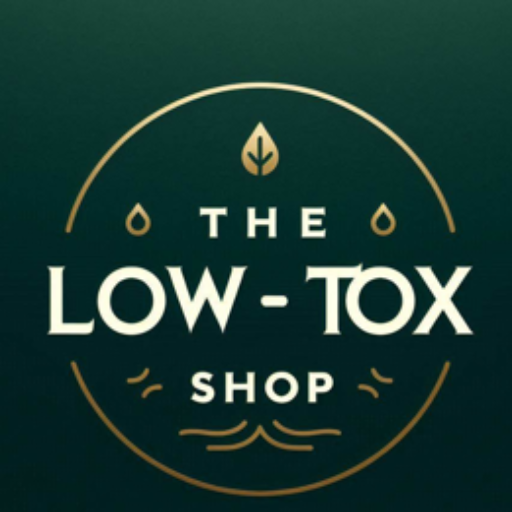Today, In 8 Minutes or Less, You’ll Learn:
- How environmental toxins and lifestyle choices contribute to autoimmune disease.
- The science behind cellular resilience, apoptosis, and immune function in disease prevention.
- Cutting-edge biohacking strategies, AI-driven diagnostics, and epigenetic insights for immune health and longevity.
The Rise of Autoimmune Disease—And How to Take Control
Autoimmune diseases are increasing at an alarming rate, affecting over 5% of the global population (Cooper et al., 2009). Instead of accepting this trend as inevitable, we need to ask:
- What underlying mechanisms drive autoimmune disease?
- How can we proactively strengthen immune resilience?
The traditional approach focuses on managing symptoms after diagnosis. But a low-tox lifestyle shifts the emphasis to prevention—leveraging epigenetics, toxin reduction, and AI-driven diagnostics to optimize immune function and reduce autoimmune risk.
The Cellular Perspective: Why Healthy Cells Matter
The immune system is a finely tuned defence network designed to protect against external threats while maintaining self-tolerance. When this balance breaks down, the body mistakenly attacks its own tissues, leading to autoimmunity.
What Causes This Breakdown? The Answer Lies at the Cellular Level.
- Apoptosis (programmed cell death): This natural process removes damaged or dysfunctional cells before they trigger chronic inflammation. Impaired apoptosis allows faulty cells to persist, increasing autoimmune risk.
- Cell rejuvenation: The body’s ability to repair and regenerate cells is crucial for maintaining immune homeostasis and longevity.
- Epigenetic Factors:
- DNA Methylation & Histone Modification can alter gene expression, increasing susceptibility to autoimmune conditions.
- Non-coding RNAs influence immune regulation at a genetic level, highlighting how environmental factors impact genetic expression over time. (Rejuve.AI, 2025)
A low-tox lifestyle aims to optimize these cellular processes by reducing exposure to inflammatory triggers and enhancing detoxification, mitochondrial function, and nutrient absorption.
Environmental Triggers and the Toxin Burden
Unlike genetic predisposition, which remains static, our daily exposures determine whether certain genes are activated. Researchers have identified key environmental triggers for autoimmunity:
- Endocrine-Disrupting Chemicals (EDCs): Found in plastics, cosmetics, and food packaging, EDCs interfere with immune regulation and hormone balance.
- Heavy Metals (Mercury, Lead, Arsenic): These accumulate in tissues, triggering oxidative stress and immune dysfunction.
- Pesticides & Herbicides: These disrupt the gut microbiome—a key regulator of immune health.
- Ultra-processed Foods & Artificial Additives: These fuel systemic inflammation and impair metabolic pathways.
- Chronic Stress & Sleep Deprivation: Elevated cortisol levels suppress immune balance, making the body more susceptible to autoimmunity. (Stojanovich & Marisavljevich, 2008)
Reducing daily toxin exposure is a crucial step toward restoring immune balance at a cellular level.
Personalized Testing: A Data-Driven Approach to Prevention
Autoimmune disease doesn’t develop overnight—subtle physiological shifts occur years before diagnosis. Advanced diagnostics now allow us to track early warning signs and intervene before autoimmunity takes hold.
- Omega-3 Index Testing: Chronic inflammation is a precursor to autoimmunity. The omega-3 to omega-6 ratio is a powerful indicator of inflammatory load (Hahn et al., 2022).
- Microbiome Analysis: Since 70% of the immune system is housed in the gut, gut testing reveals bacterial imbalances, pathogens, and leaky gut issues (Mousa et al., 2022).
- Heavy Metal & Toxin Panels: Identifying toxic burdens early prevents long-term immune dysregulation. (Miller et al., 2012).
- Genetic Risk Assessments: While genes aren’t destiny, understanding genetic predisposition helps tailor preventative strategies.
- Comprehensive Nutrient Profiling: Deficiencies in vitamin D, magnesium, and zinc are linked to autoimmune risk (Ding et al., 2006).
- AI-Powered Multi-Task Learning Models: Advanced machine learning models like MIRACLE integrate genetic and environmental data to predict autoimmune risk before symptoms develop (Rejuve.AI, 2025).
Using this data-driven approach, individuals can implement targeted interventions before autoimmunity takes hold—shifting from reaction to prevention.
The Low-Tox Strategy for Cellular Longevity
Supporting cellular function and immune balance requires a multi-faceted approach:
- Nutritional Precision: Prioritize anti-inflammatory, nutrient-dense foods rich in polyphenols, omega-3s, and bioavailable vitamins to support immune modulation.
- Toxin-Free Living: Reduce exposure to harmful chemicals by choosing organic produce, clean skincare, and non-toxic household products.
- Gut Restoration: Foster a resilient microbiome with prebiotics, probiotics, and fermented foods.
- Stress Resilience: Implement mindfulness, breathwork, and restorative sleep to regulate immune response.
- Biohacking Cellular Health: Optimize mitochondrial function with infrared sauna, cold therapy, and strategic fasting.
- Movement & Detoxification: Regular exercise enhances lymphatic drainage and toxin elimination.
By combining personalized nutrition, toxin avoidance, and biohacking strategies, we enhance immune tolerance, cellular repair, and long-term health.
Key Takeaways
- Autoimmune diseases are triggered by environmental toxins, chronic inflammation, and immune dysregulation.
- Cellular resilience—through apoptosis, rejuvenation, and toxin reduction—is key to preventing immune dysfunction.
- Epigenetics plays a major role in immune health, highlighting the importance of reducing environmental triggers.
- Early detection with advanced biomarkers (gut microbiome, omega-3 index) allows for targeted prevention.
- A low-tox lifestyle supports longevity by minimizing toxic burdens, reducing inflammation, and enhancing mitochondrial function.
Empowering Change: Beyond Awareness to Action
Autoimmune disease prevention isn’t about waiting for symptoms—it’s about proactive, personalized interventions that start at the cellular level.
The Low-Tox lifestyle is a science-backed strategy for:
- Enhancing immune tolerance
- Reducing environmental triggers
- Optimizing cellular function for longevity
With the right knowledge and cutting-edge diagnostics, we shift from disease management to true health empowerment.
Every decision—from the water we drink to the air we breathe—determines our cellular fate. The future of health is personal, data-driven, and rooted in reducing toxic burdens while maximizing human potential.
The choice is ours: react to disease, or take control of our cellular destiny today.
Your Next Step
Now that you know how toxins impact immune health, take a moment to assess your daily exposures. Check your kitchen, personal care products, and household items for hidden toxins. Found something surprising? Tag me on Instagram @TheLowToxShop and share your biggest takeaway!
Found this blog useful?
⚡️ Don’t keep it to yourself—send this to a friend who’d love it too!
⚡️ Come tell me your biggest takeaway on Instagram @TheLowToxShop—I’d love to hear from you!
Citations & References
Open the folder for Sources & Further Reading.
Cooper, G. S., Bynum, M. L. K., & Somers, E. C. (2009). Recent insights in the epidemiology of autoimmune diseases: Improved prevalence estimates and understanding of clustering of diseases. Journal of Autoimmunity, 33(3–4), 197–207. https://doi.org/10.1016/j.jaut.2009.09.008
Ding, C., Gao, D., Wilding, J., Trayhurn, P., & Bing, C. (2012). Vitamin D signalling in adipose tissue. British Journal of Nutrition, 108(11), 1915–1923. https://www.cambridge.org/core/journals/british-journal-of-nutrition/article/vitamin-d-signalling-in-adipose-tissue/2A3E817DC3FE9325D8892730461A6902
Hahn, J., Cook, N. R., Alexander, E. K., Friedman, S., Walter, J., Bubes, V., Kotler, G., Lee, I.-M., Manson, J. E., & Costenbader, K. H. (2022). Vitamin D and marine omega-3 fatty acid supplementation and incident autoimmune disease: VITAL randomized controlled trial. BMJ, 376, e066452. https://doi.org/10.1136/bmj-2021-066452
Miller, F. W., Pollard, K. M., Parks, C. G., Germolec, D. R., Leung, P. S. C., Selmi, C., Humble, M. C., & Rose, N. R. (2012). Criteria for environmentally associated autoimmune diseases. Journal of Autoimmunity, 39(4), 253–258. https://doi.org/10.1016/j.jaut.2012.05.001
Mousa, W. K., Chehadeh, F., & Husband, S. (2022). Microbial dysbiosis in the gut drives systemic autoimmune diseases. Frontiers in Immunology, 13, 906258. https://doi.org/10.3389/fimmu.2022.906258
Rejuve.AI. (2025, February 14). Autoimmune diseases are on the rise, are you pre-autoimmune? Rejuve.AI. https://www.rejuve.ai/post/autoimmune-diseases
Stojanovich, L., & Marisavljevich, D. (2008). Stress as a trigger of autoimmune disease. Autoimmunity Reviews, 7(3), 209–213. https://doi.org/10.1016/j.autrev.2007.11.007


